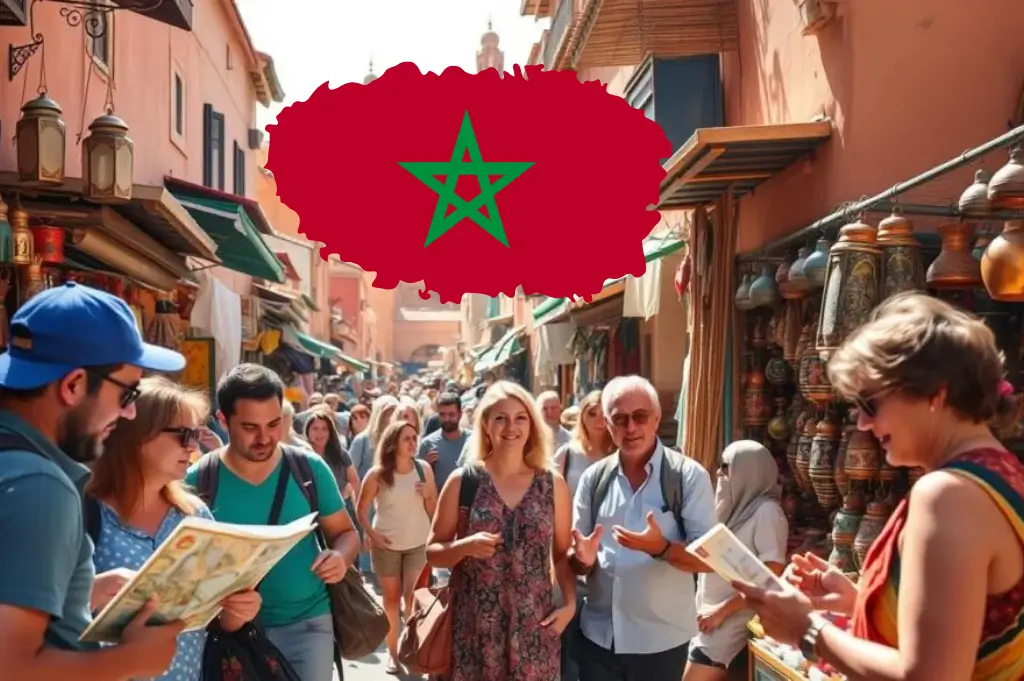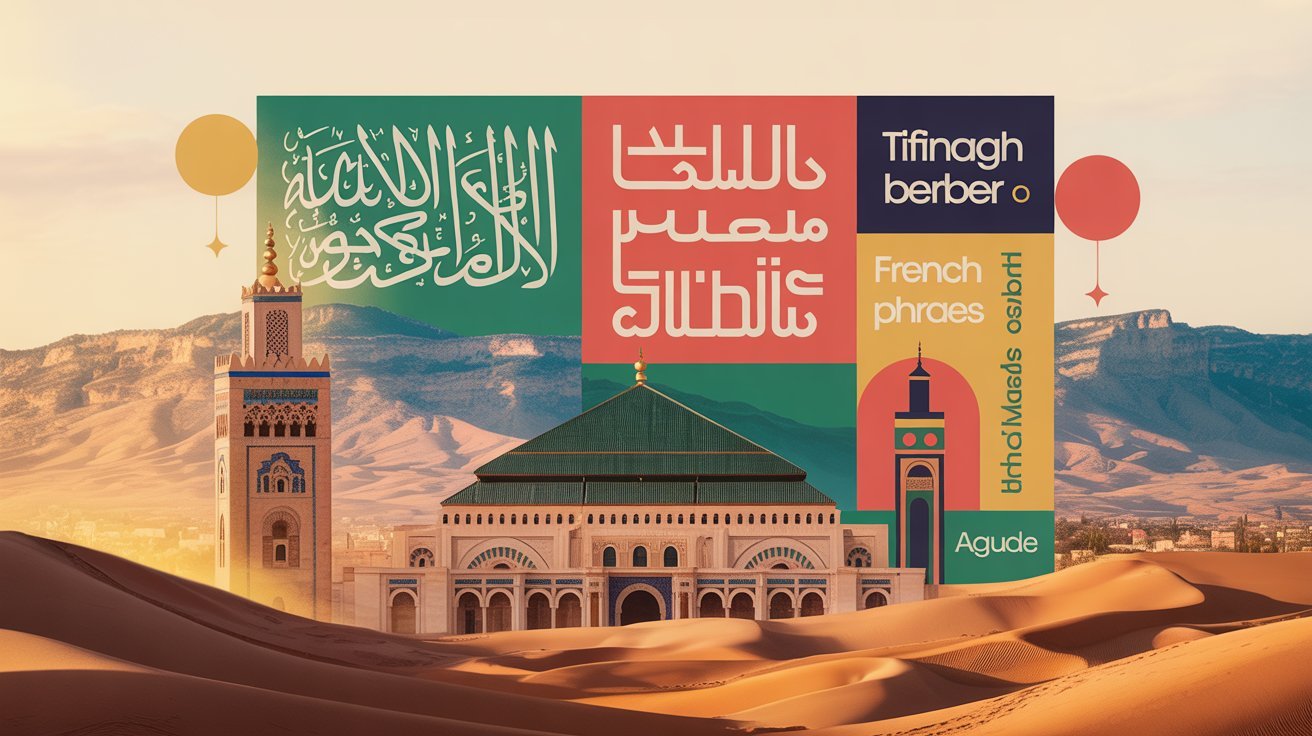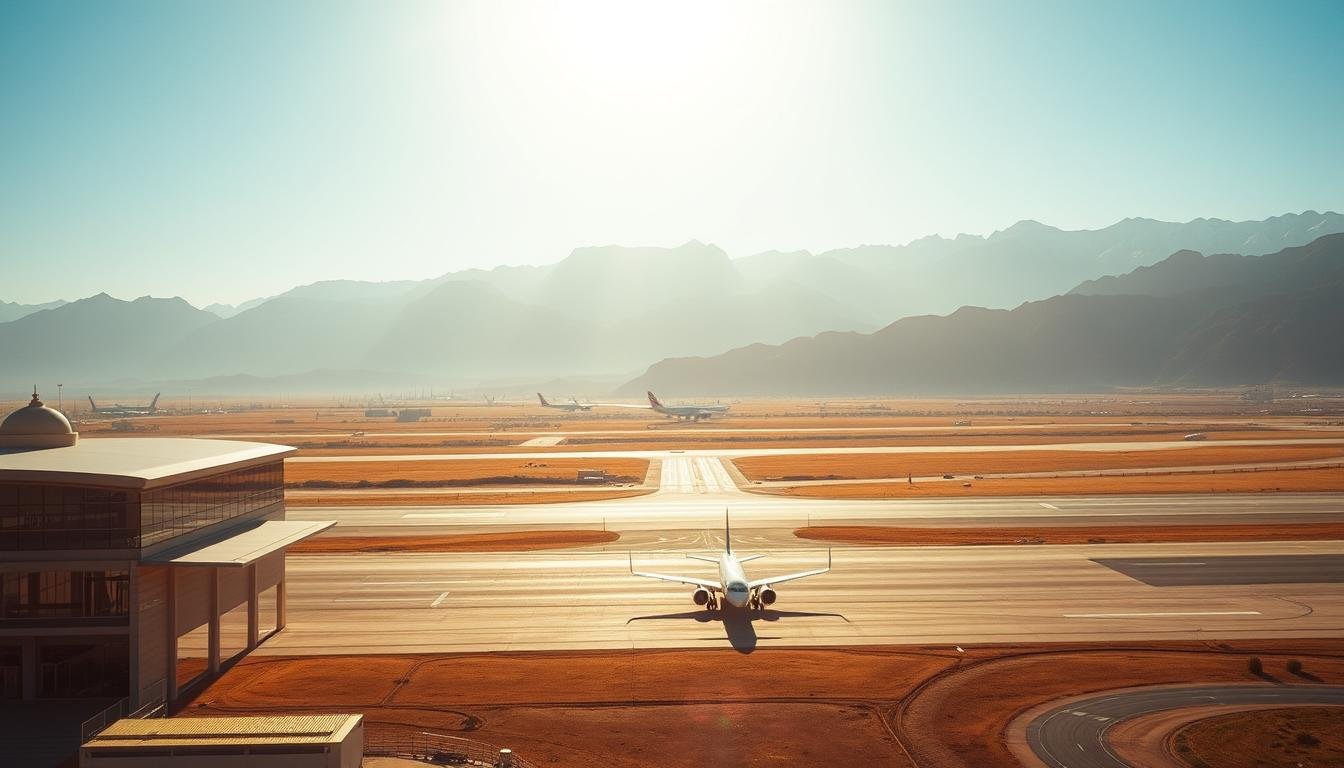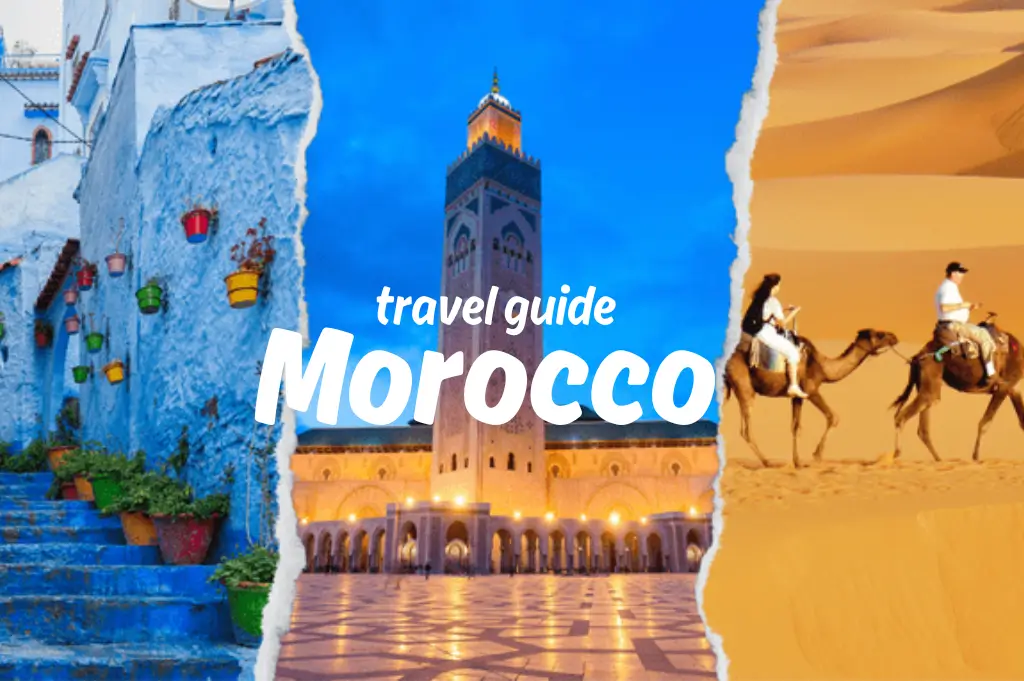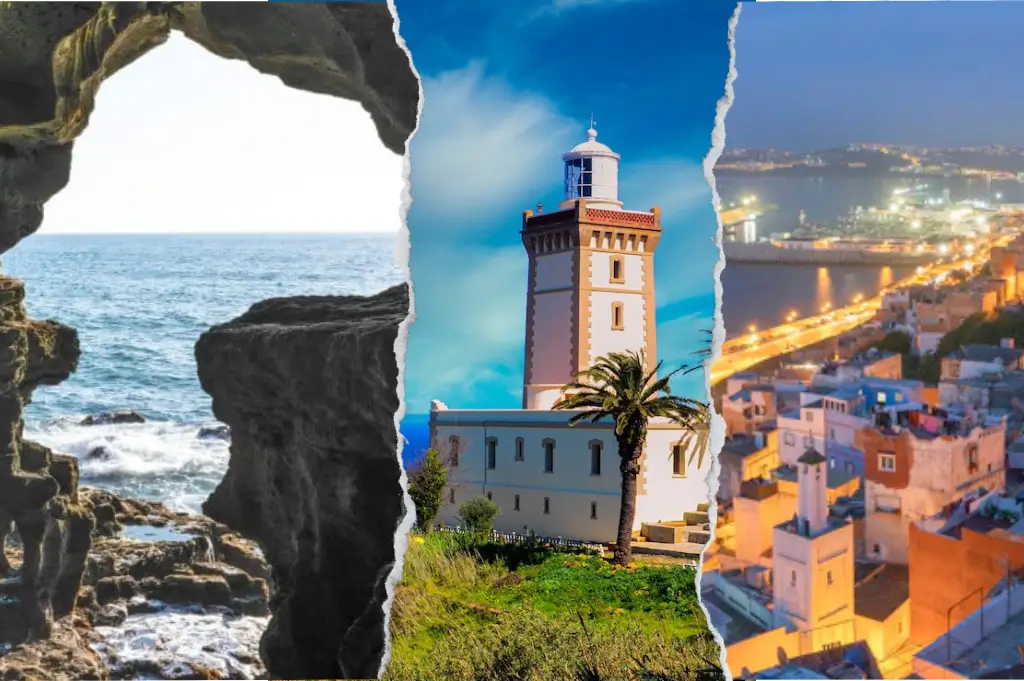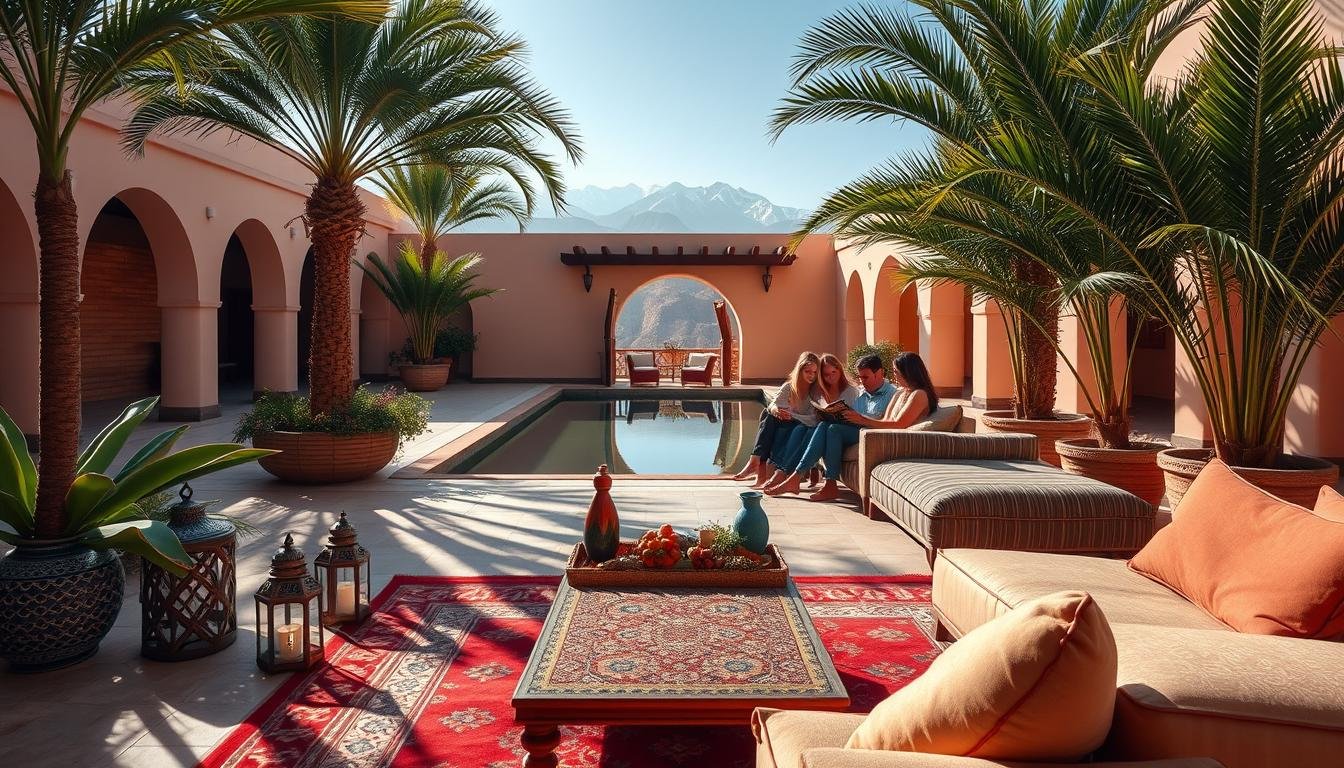The Ultimate Guide: Best Time to Visit Morocco for an Unforgettable Journey (2025)
Morocco, a country of captivating allure, offers a vibrant tapestry of culture, diverse landscapes, and rich history that beckons travelers from around the globe. From the bustling souks of Marrakech to the golden dunes of the Sahara Desert, from the blue-painted streets of Chefchaouen to the Atlantic coastline’s pristine beaches, Morocco presents an extraordinary array of experiences. However, choosing the best time to visit Morocco can significantly influence your travel experience, transforming a good trip into an unforgettable journey.
Whether you’re planning to explore ancient medinas, embark on desert adventures, relax on coastal beaches, or trek through mountain landscapes, timing is everything. The best time to go to Morocco depends on your interests, preferred activities, and tolerance for crowds and varying weather conditions. This comprehensive guide provides authentic insights drawn from extensive travel experience and local knowledge, helping you determine the optimal time for your Moroccan adventure.
This guide covers everything you need to know about Morocco’s seasonal variations, regional climate differences, month-by-month breakdowns, and specific timing recommendations for various activities. We’ll explore the best months to visit Morocco for different experiences, ensuring you can plan the perfect itinerary regardless of your travel style or budget.
Table of Contents
Understanding Morocco’s Climate Zones
Morocco’s diverse geography creates distinct climate zones, each offering unique experiences throughout the year. Understanding these regional variations is crucial for determining the best season to visit Morocco based on your planned destinations.
Coastal Regions (Casablanca, Rabat, Essaouira) enjoy a Mediterranean climate with mild, wet winters and warm, dry summers. The cooling ocean breezes make coastal areas particularly pleasant during the warmer months, offering respite from inland heat.
Northern Mountains (Chefchaouen, Ifrane) experience cooler temperatures year-round, with snow in higher elevations during winter months. These regions offer pleasantly mild summers, making them ideal retreats when other areas become uncomfortably hot.
Interior Cities (Fez, Meknes) have a continental climate characterized by hot summers and cold winters, with occasional frost during the coldest months. Temperature variations can be significant between day and night.
Southern Interior (Marrakech, Ouarzazate) features a semi-arid climate with very hot summers, mild winters, and minimal rainfall throughout the year. These areas experience some of Morocco’s most extreme temperature variations.
Sahara Desert (Merzouga, M’Hamid) presents the most extreme conditions, with scorching days often exceeding 100°F (38°C) in summer and nights that can drop below freezing in winter. The desert’s dramatic temperature swings require careful planning regardless of when you visit.
Morocco Season by Season: Advantages & Challenges
Spring (March-May): Blooming Landscapes & Mild Weather
Spring represents one of the best times to go to Morocco, offering mild and pleasant weather with temperatures generally ranging from 65°F-85°F (18°C-29°C). The weather becomes increasingly drier from April onwards, creating ideal conditions for outdoor activities.
The countryside transforms into a lush green landscape adorned with wildflowers, particularly in the Atlas Mountains. This season is perfect for hiking, garden tours, comprehensive city exploration, and desert excursions. Crowds and prices remain moderate, though they can increase during Easter holidays.
Notable festivals include the Almond Blossom Festival in Tafraoute (March), International Nomads Festival in M’Hamid (March), Sufi Music Festival in Fez (April), and the famous Rose Festival in Dades Valley (May).
Summer (June-August): Festivals & Coastal Escapes
Summer brings hot weather, particularly in inland areas where Marrakech and Sahara regions often reach 90°F-104°F (32°C-40°C+). July and August are typically the hottest months. However, coastal areas remain cooler due to refreshing ocean breezes, making this the best month to go to Morocco for beach enthusiasts.
This season is ideal for coastal activities like swimming and bodyboarding, while mountain retreats offer cooler temperatures. Desert tours become challenging due to extreme heat, with many camps temporarily closing. Crowds are high along the coast but lower in interior regions due to the intense heat.
Summer festivals include the renowned Gnaoua World Music Festival in Essaouira (June/July), Cherry Festival in Sefrou (June), Festival de Casablanca (July/August), and Jazzablanca (June).
Autumn (September-November): Golden Hues & Desert Adventures
Autumn offers warm days and cooler evenings with moderate temperatures ranging from 70°F-90°F (21°C-32°C) and minimal rainfall. This period is widely considered among the best times to visit Morocco, particularly for desert excursions, city exploration of Imperial cities like Marrakech, Fez, and Rabat, and hiking activities.
Crowds remain moderate to high initially but begin decreasing in October, when prices start to drop. The golden light during this season creates spectacular photographic opportunities throughout the country.
Autumn festivals include the Date Festival in Erfoud (September/October), Tanjazz in Tangier (September), Marathon des Sables in the Sahara (October), and various Sufi festivals.
Winter (December-February): Snow Sports & Desert Warmth
Winter brings chilly weather to most cities, with temperatures ranging from 40°F-65°F (4°C-18°C), while snow blankets the Atlas and Rif Mountains. Southern regions and the Sahara remain dry and pleasant, though desert nights can be extremely cold, even below freezing.
This is the optimal time for skiing and snowboarding in the Atlas Mountains near Ifrane, hiking, and comfortable Sahara desert tours with pleasant days perfect for stargazing at night. Cities like Marrakech and Fez become ideal for exploration without oppressive heat.
Crowds and prices vary significantly, with generally fewer crowds appealing to budget travelers (January typically offers the lowest prices), though holiday periods see increased activity.
Month-by-Month Breakdown: Your Ideal Moroccan Calendar
January
Temperature: 50-68°F (10-20°C) Highlights: Cool temperatures and fewer crowds make this an excellent budget travel month. Marrakech feels refreshing, while northern Morocco and desert regions offer solitude. Desert nights can drop below freezing, requiring warm clothing.
February
Temperature: 54-72°F (12-22°C) Highlights: Mild temperatures make this perfect for exploring Essaouira’s UNESCO Medina and vibrant cultural scene without summer crowds. Desert days are comfortable at 72°F (22°C), with cool nights.
March
Temperature: 59-77°F (15-25°C) Highlights: Comfortable temperatures make Fez and Rabat excellent for exploration. Chefchaouen hiking becomes pleasant. Note that Ramadan often begins in March (2025: February 28-March 29).
April
Temperature: 61-81°F (16-27°C) Highlights: Warm days with little rainfall make Marrakech and Sahara perfect destinations. Prices increase but conditions are ideal for Atlas Mountains hiking amid spring flowers.
May
Temperature: 64-84°F (18-29°C) Highlights: Warm temperatures as crowds pick up. Chefchaouen becomes a must-visit destination, perfect for day trips to Akchour waterfalls. The Sahara begins getting hot.
June
Temperature: 72-91°F (22-33°C) Highlights: Hot weather brings top festivals like Gnaoua and Cherry Festival. Casablanca offers coastal cooling. The Sahara becomes very hot.
July
Temperature: 75-97°F (24-36°C) Highlights: Peak tourist season with very hot weather. Tangier and Atlantic coast destinations like Asilah are ideal for beaches. Sahara reaches extreme temperatures over 113°F (45°C).
August
Temperature: 77-99°F (25-37°C) Highlights: Peak tourist month with steamy conditions. High Atlas Mountains provide cooler climate refuge. Coastal areas remain the best option.
September
Temperature: 70-90°F (21-32°C) Highlights: Warm weather with thinning crowds. Fez showcases medieval architecture and cultural scenes beautifully. Good conditions return for desert tours.
October
Temperature: 64-82°F (18-28°C) Highlights: One of the absolute best months to visit Morocco with warm weather and little rainfall. Sahara Desert and Marrakech become choice destinations. Excellent deals on accommodation and activities. Ideal trekking conditions.
November
Temperature: 57-75°F (14-24°C) Highlights: Mild temperatures with fewer crowds create prime hiking weather in Chefchaouen, Northern Morocco, and southern regions. Rabat and Meknes are excellent. Optimal for Sahara travel.
December
Temperature: 50-68°F (10-20°C) Highlights: Cooler temperatures with fewer crowds (except holidays). Marrakech offers festive atmosphere, while Ifrane provides snow wonderland skiing. Desert conditions are pleasant for stargazing.
Best Time for Specific Moroccan Experiences
Desert Adventures
Optimal Period: October to April for cooler, comfortable temperatures. Mid-February to April and October to mid-November are particularly ideal with temperatures ranging 70-85°F (21-29°C). Avoid June through August due to extreme heat.
Beach Holidays
Optimal Period: June to September for warm weather and ideal swimming conditions. Shoulder seasons (March-May, September-November) offer quieter beach atmospheres with pleasant weather.
Avoiding Crowds & Budget Travel
Optimal Period: Shoulder seasons (March-May and September-November) provide pleasant weather with fewer tourists. January offers the most budget-friendly period with significantly lower accommodation rates. Visiting on weekdays helps avoid weekend crowds.
Cultural Immersion & City Exploration
Marrakech: Fall (September-November) offers perfect weather for exploring historic sites and bustling souks. Spring (March-May) provides equally excellent conditions.
Fez: March and September are particularly ideal for exploring the medieval medina and cultural attractions.
Chefchaouen: May presents the best conditions for exploring the famous blue city and surrounding mountains.
Generally, spring and fall offer the most comfortable conditions for exploring medinas and historical monuments throughout Morocco.
Mountain Trekking & Photography
Optimal Period: April-May and September-October provide pleasant conditions in the Atlas Mountains. October light is particularly spectacular for photography, especially capturing the warm tones of medina walls and mountain landscapes.
Important Travel Considerations
Visiting Morocco During Ramadan
Understanding fasting customs is essential, as shop and restaurant hours may change during this holy month. However, Ramadan also offers unique experiences like iftar evening meals and special celebrations. Remember that Ramadan dates vary annually according to the lunar calendar.
Safety
Morocco is generally safe for tourists, but awareness of common scams is important. These include fake guides, overpriced souvenirs, the “it’s closed” trick, pickpocketing, and fraudulent transportation offers. Essential tips include carrying cash, dressing modestly, avoiding public displays of affection, not walking alone at night in unfamiliar medinas, and keeping valuables out of sight.
Cultural Considerations
Morocco is a conservative country where women should dress modestly with covered shoulders and knees. Loose-fitting clothing works best for heat, while layers are necessary for cold nights and winter travel. The official languages are Arabic and Berber (Amazigh), though Darija (Moroccan Arabic mixed with French and Spanish) is commonly spoken. Many people in tourist areas speak French, Spanish, or English.
Practical Information
The currency is the Moroccan dirham (MAD), with cash often preferred outside major cities. Alcohol isn’t widely available due to the Muslim religion but can be found in bars and restaurants in larger cities. Always opt for bottled water instead of tap water.
Getting Around Morocco: Your Transport Options
Taxis are readily available throughout Morocco. Negotiate fares in advance, and consider large shared taxis for inter-city budget travel, which provide authentic local experiences.
Buses offer the cheapest transportation option, with companies like CTM and ONCF Autocars providing comfortable, air-conditioned travel suitable for luggage.
Trains are excellent for longer journeys, offering comfort and air conditioning through ONCF. The Al Boraq high-speed train connects Casablanca to Tangier efficiently.
Private Cars provide maximum flexibility for road trips, especially to desert destinations. You can rent with or without a driver, though drivers are more expensive but familiar with local driving customs.
Moroccan Accommodation & Culinary Delights
Accommodation Options
Morocco offers accommodation ranging from budget hostels to luxurious riads. Traditional riads (houses built around courtyards) provide unique local experiences, while Sahara camping offers unforgettable desert nights under star-filled skies.
Culinary Experiences
Moroccan cuisine is renowned for flavorful spices and offers excellent healthy, vegetarian options.
Must-try dishes include Tagine (slow-cooked stew), Couscous (semolina, traditionally served Fridays), Harira (hearty soup), Zaalouk (eggplant and tomato salad), and traditional mint tea (the hospitality drink).
Pastries to sample include Kaab el ghazal (“gazelle’s ankles”) and Chebakia (fried dough with honey and sesame seeds).
Morocco Bucket List Experiences
Essential Moroccan experiences include traditional hammam visits, exploring Fez medina, camel trekking in the Sahara, visiting Hassan II Mosque in Casablanca, shopping in Marrakech souks, hiking the Rif Mountains, kite surfing in Essaouira, discovering blue Chefchaouen, marveling at Volubilis Roman ruins, visiting coastal Asilah, taking cooking classes, road tripping through Dades Valley, hiking to Akchour waterfalls, quad biking in the desert, exploring Ait Benhaddou kasbah, experiencing Berber culture, enjoying Gnaoua music, visiting desert oases, touring Ouarzazate film studios, skiing in Ifrane, sipping mint tea on rooftops, enjoying traditional Moroccan breakfasts, learning about Jewish history, glamping in the desert, Atlantic coast road trips, horseback tours, visiting Moulay Idriss Zerhoun, exploring Tetouan, and hot air ballooning over the Atlas Mountains.
FAQs About Visiting Best Time to Visit Morocco
What is the best month to go to Morocco? March-May or September-November offer mild weather and fewer crowds. June is ideal for the Atlantic coast and northern regions, while September is perfect for Fez, Marrakech, and Merzouga.
How many days is enough for Morocco? 7-10 days allows for visiting a couple of cities and a desert trip. Two weeks enables exploration of mountains, ancient medinas, and the Atlantic coast comprehensively.
Is Morocco friendly to tourists? Very friendly and hospitable, with abundant accommodation, guides, and transportation options. While petty crime like pickpocketing and scams exist, there are no major safety concerns.
Where should I go for the first time in Morocco? Iconic cities like Fez and Marrakech, combined with a desert road trip, are essential. Consider adding Essaouira, Chefchaouen, Tangier, and Asilah to experience both southern and northern Morocco.
Is Morocco cheap for tourists? Yes, by Western standards. Morocco is budget-friendly with inexpensive accommodation, attractions, shopping, and food options, while catering to all price ranges.
Conclusion: Crafting Your Perfect Moroccan Adventure
The best time to visit Morocco ultimately depends on your individual preferences and desired experiences. Morocco offers unforgettable experiences year-round, from vibrant summer festivals to serene winter desert nights, from spring’s blooming landscapes to autumn’s golden photography light.
Whether you’re seeking adventure in the Sahara, cultural immersion in ancient medinas, relaxation on Atlantic beaches, or trekking through mountain landscapes, this guide provides the foundation for planning your perfect Moroccan journey. The best time to go to Morocco is when it aligns with your interests, budget, and travel style.
Use this comprehensive guide to curate your unique adventure, considering seasonal variations, regional climate differences, and specific activity timing to ensure your Moroccan experience exceeds all expectations.
Ready to plan your Moroccan adventure? Contact us for personalized tour recommendations tailored to your perfect travel season!
Share your favorite time to visit Morocco in the comments below – we’d love to hear about your experiences!
Written by experienced travel experts who have spent years exploring Morocco’s diverse regions and seasons, sharing authentic insights and practical advice based on extensive local knowledge and cultural understanding.

